Big Rare Ancient Viking Dragon Pendant
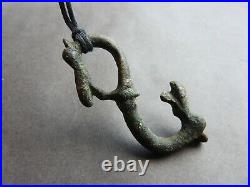

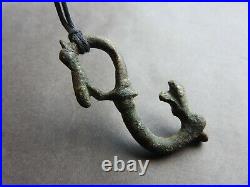
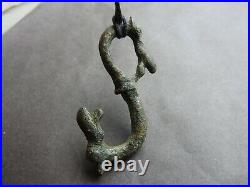

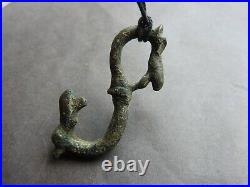

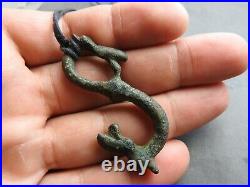
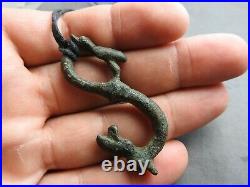
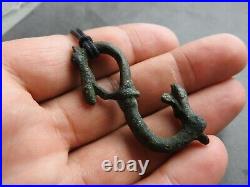



Since ancient times, the dragon was an important creature and symbol associated with the Norse mythology and, later on, integrated and described in the folk tales of the Scandinavian countries. Regarding the real usage of the dragon in the Norse culture, it must be mentioned that the most wealthiest of the reputed longships were decorated with dragon heads on their bow and stern, as a sign of strength, power, and bravery. In addition, waving draco flags were sometimes on the battlefield by the Norsemen (and also by the Anglo-Saxons) in order to intimidate their foes. Thus, the dragon was definitely a major symbol that defined the Viking Age.
By far, the most well known Norse dragons accounted in the aforementioned sources are Níðhggr (or Nidhogg in English and modern Norwegian), Jrmungandr (commonly known as the Midgard Serpent), Fáfnir (the mythical dragon slain by Sigurd), and a certain dragon killed by Frotho I, a legendary King of the Danes portrayed in Gesta Danorum. Níðhggr (literally malice striker in English, as the Old Nose term níð meant loss of honour in the Norse society and höggr striker respectively) appears in the Old Norse texts as an atrocious creature which gnaws the roots of the world tree, namely Yggdrasil.
Consequently, it was named as such given its appearance and its terrifying behaviour towards the dishonest dwellers of Hel (the realm of the dishonorable dead in Norse cosmology). Jrmungandr (literally great beast), one of the offsprings of giantess Angrboða (Angrbroda) and trickster god Loki, is the humongous sea serpent which dwells in the ocean that encircles Midgard (the realm of humankind in Norse cosmology). Its nemesis is represented by Thor, the god of lightnings and thunders, protector of mankind.Fáfnir, initially the son of King Hreiðmarr (Hreidmar) of the dwarves, is said to have been cursed at some point by a magical ring crafted by a magician dwarf by the name Andvari which turned him into a dragon. Subsequently, he will be slain by Sigurd, a legendary Norse hero. THIS IS A WONDERFUL GIFT FOR THE VIKING HISTORY ENTHUSIAST.
IT CAN ALSO BE WORN AS AN ANCIENT TALISMAN. Please ask any question you may have, high resolution photos can be provided upon request. Thank you for looking, please check back occasionally as new items will be added regularly. This item is genuine and described period. Measurements: please see the photos.You will find an interesting variety of antiquities. Items offered are unconditionally guaranteed to be authentic. We don't sell fakes or replicas. The item "Big Rare Ancient Viking Dragon Pendant" is in sale since Tuesday, September 29, 2020.
This item is in the category "Collectibles\Decorative Collectibles\Other Decorative Collectibles". The seller is "dmitry-viking" and is located in Europe. This item can be shipped worldwide.
- Material: Bronze
- Provenance: Ownership History Not Available
